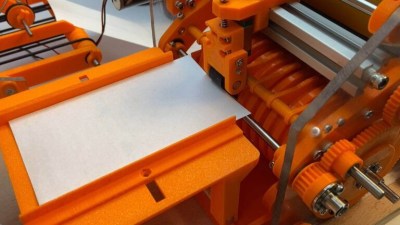When faced with the offer of free machining equipment, there is no realistic way to say ‘no’. This is how [Anthony Kouttron]’s brother [Thomas] got to pick up a large 1990s-era CNC machine as a new companion for his growing collection of such equipment. The trickiest part of the move to the new location was getting the machine to fit through the barn doors, requiring some impromptu disassembly of the Z-axis assembly, which required the use of an engine crane and some fine adjustments with the reinstallation. With that [Thomas] and [Anthony] got to gawk at their new prize in its new home.
This Millport vertical mill is effectively a Taiwanese clone of the Bridgeport vertical mill design, though using an imported servo control system from Anilam. The most exciting part about a CNC machine like this is usually the electronics, especially for a well-used machine. Fortunately the AT-style PC and expansion cards looked to be in decent condition, and the mill’s CRT-based controller popped up the AMI BIOS screen before booting into the Anilam S1100 CNC software on top of MS-DOS, all running off a 1 MB Flash card.
Which is not to say that there weren’t some issues to be fixed. The Dallas DS12887 real-time clock/NVRAM module on the mainboard was of course dead. After replacing it, the BIOS finally remembered the right boot and input settings, so that the CNC machine’s own controls could be used instead of an external keyboard. This just left figuring out the Anilam controls, or so they thought, as a range of new errors popped up about X-lag and the Distribution Board. This had [Anthony] do a deep-dive into the electronics cabinets to clean metal chips and repair broken parts and floating pins. After this and a replacement Anilam Encoder this Millport vertical mill was finally ready to be put back into service.
Continue reading “Reviving A Free 1990s Millport CNC Vertical Mill”


















